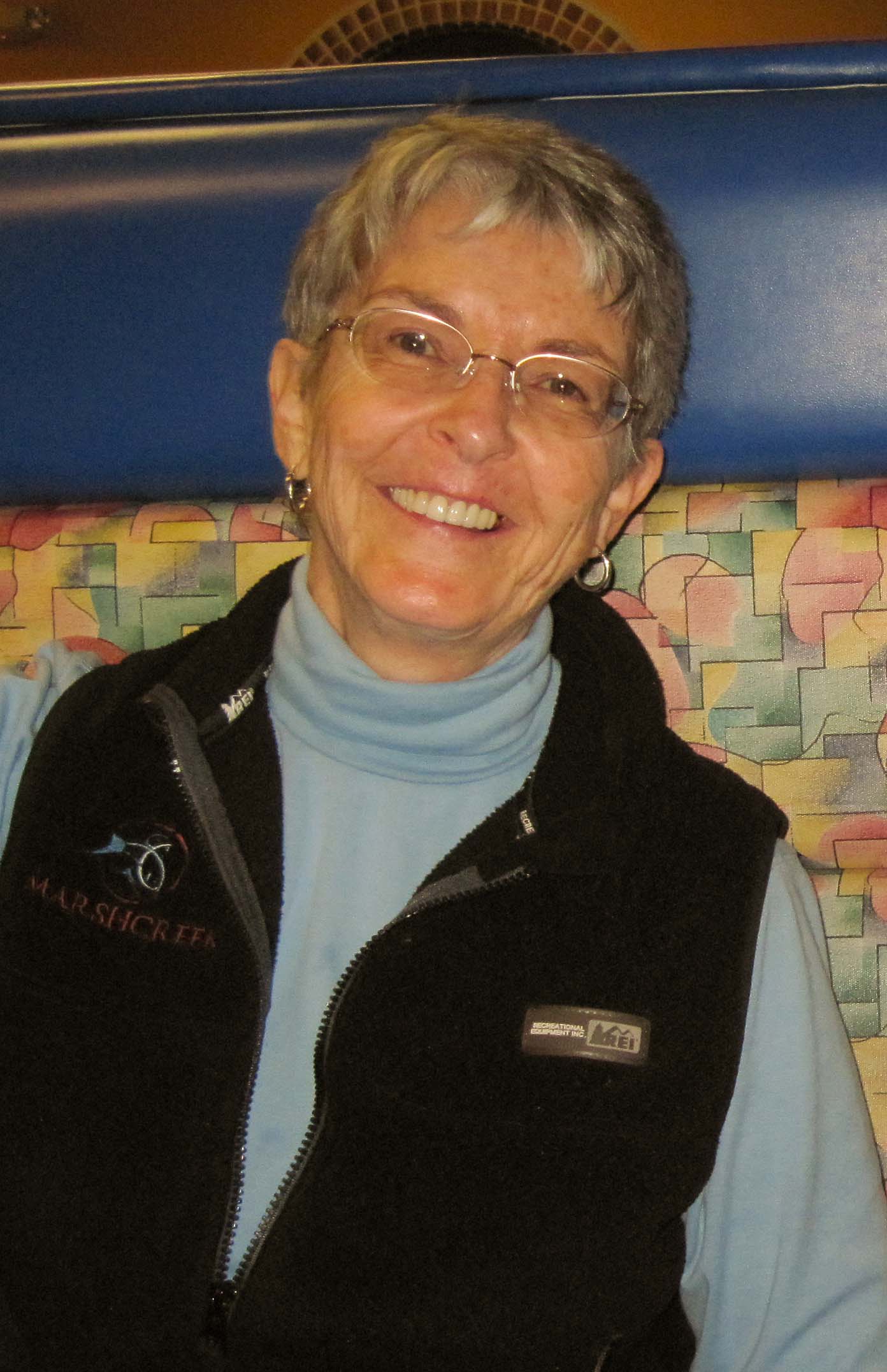Bringing billing innovations to Alaska's most remote communities
One of the critical challenges in serving remote communities around the world with vital electricity and other infrastructure services is how to pay for such services. The following are selected excerpts from UA Press’ forthcoming book Alaska’s Energy Innovators that follow the story of two women who were pivotal in creating electric utilities in Alaska’s smallest and most remote villages and provided the tools — through prepay metering technology — to enable these micro-utilities to become sustainable enterprises.
Clarissa’s Story
By Clarissa Quinlan
June 03, 2024

Clarissa Quinlan
I started my Alaska energy industry career in 1976 with the State of Alaska’s Division of Energy and Power Development. In 1982, I transitioned to the private sector and worked on installing power projects in Alaska communities without any central electricity supply. This work evolved into assisting villages with the set up and operation of their own power company, including getting recognized and certified as an electric utility with the State of Alaska, organizing a simple bookkeeping system, and establishing utility rates.
These power plants were not the advanced systems that exist today with high reliance on electronics and computerized controls. These were smaller basic diesel power plants designed to provide power in places that previously had no electricity at all. This was before cable TV, telephones in each home, village laundromats, water and sewer systems, and new schools.
The next step was to get the local power company certified to operate as an electric utility with the Regulatory Commission of Alaska. Our priority has always been for the community to operate and oversee all facets of the utility such as management, bookkeeping and routine maintenance. The goal is to remain viable through the use of local labor with limited outside assistance – and only then when needed.
One of the critical challenges in serving remote communities around the world with vital electricity services is how to pay for such services. While many microgrids designed for remote communities are supported initially by government or non-profit organization grants, key remaining challenges are ongoing support for maintenance and recovering enough revenue to create a sustainable utility enterprise. An important service my company provided was a prepay metering system in order to keep these small utilities financially solvent.
While there are rules about payment deadlines and shutting the power off when electricity bills are not paid in each of these utility service areas, these rules face cultural challenges. Many people in these small communities might be related. Are you really going to disconnect your mother? Collecting bills for electrical service can be very difficult. Disconnect notices must be issued to customers who have not paid. But, if they didn’t pay and were not disconnected, other residents might ask, “Why should I pay”? There could be rival camps like any small town. In some instances, some utility personnel were threatened physically if they tried to disconnect customers who didn’t pay their bills. And so bill payment could be an ongoing and stressful hassle.
If receivables build up, these small micro-utilities cannot collect enough money to pay for their operations, including fuel, which can be incredibly expensive in isolated communities. So the prepay meters end up being a savior for these community-based utilities because they automatically shut-off power for accounts overdue and empower consumers with real-time use information to help prevent (or predict) the likelihood of being disconnected. It removed the risk of an entangled middleman while providing an easy pathway for consumers to either reduce their energy use or pay what they have available to the meter to avoid being disconnected.
Initially, I didn't think too much about the aspect that prepay meters would become absolutely critical to maintaining a viable power company. I did believe prepay meters had potential because collections and receivables are the heart of staying alive for any utility. I soon realized these prepay meters were the most important technology advancement for these community microgrid utilities.
Today, however, metering advances are digital and wireless in some form or another and dependent upon internet access. The self-contained Ampy smart card metering system we set up and continue to support has been discontinued. Some of the original components are no longer available. Unfortunately, broadband internet is not currently reliable in many of these places. A big question about the viability of future prepay metering systems is whether remote areas will ever have sufficient internet access to enable the newer technologies to work. An equally important question is whether these systems are affordable for use in small communities. Their implementation requires ongoing outside professional IT support.
My involvement in this adventurous venture is diminishing and will eventually be handing over the business to Connie Fredenberg and her daughter who will be on the lookout for cost effective newer technologies.
Connie’s Story
By Connie Fredenberg

Connie Fredenberg
Since graduating with a degree in Applied Linguistics with a focus on secondary education, biology, and the Iñupiaq language from UAF in 1989, I have tried out many different kinds of jobs. I started doing prepay meter installations with Clarissa Quinlan in 2007. She flew us around in her own plane to most of the remote communities. I quickly found working with Clarissa to help small remote villages create viable utilities suited me. I spent a lot of time with my grandpa growing up. He regularly told me to “make myself useful” and I’ve carried his message with me into adulthood. Helping to keep the lights on in communities fulfills that need.
The brilliance of the prepay meters is that it makes bill collection far less painful. Most customers ended up really liking prepay meters because you don't have to come up with a large payment at the end of the month. Instead, you can come up with just ten dollars every day. You might find a bunch of quarters in your couch cushions that were enough to get you through a couple of days. It’s easier to prevent your power from being turned off.
I really enjoyed my new line of work. I worked with local staff to install the prepay meters and teach people how to use them. I then showed them how to figure out how much their appliances and other devices cost to use. I would let them turn everything off and then turn on one specific device and watch what happened on their Customer Information Unit (CIU). The CIU is mounted on an inside wall near the outside meter. It scrolls through the date, time, current price of power/kWh, how much your current electric use is costing you, and how much money remains on your meter. I had them turn devices and lights off and on to check how much the power they were using cost. Customers learned which devices consumed a lot of power and which devices used less. Most importantly, they learned how to conserve electricity real quick. There is no more powerful motivator than watching your money go backwards.
There's always some initial resistance, but in most cases a transformation occurs within 24 hours. A woman in King Cove was initially upset that we were installing the meter in her house. When I demonstrated how she could use the CIU to learn how to conserve power and teach her family members to do the same, she was more interested and commented that her husband was really bad about leaving things on when he left the room. The very next day, she saw me on the street and shared that after showing her husband how the meter worked he played with it all that evening. The next day he was turning stuff off all throughout the house. "You fixed my husband in one day," she exclaimed. Her husband now loves the meters and he is not alone.
Typically, the entire village load dropped by 10 to 15 percent by the time Clarissa and I left. Usage would sometimes creep up a little bit more as time passed, but never to the level that it was before the meters were installed. There was always a noted decrease in load. On average, there was at least a 10% drop in long-term demand for electricity.
I, too, like Clarissa, am nearing retirement. I'm 67 years old. I tried to retire last year but I got talked into doing another contract to provide Power Cost Equalization (PCE) program technical assistance for communities. I don't do much with the prepay metering business anymore. My daughter Grace does, though, as I hand those tasks down to the next generation. She's the third in line here – Grace is doing the PCE paperwork for some of the same villages that Clarissa passed on to me. She also does the technical assistance for the prepay systems that Clarissa and I installed. I am thankful that we can keep these systems operating, hopefully for many more years.
These days, there are no new installations. It's all just maintaining the existing systems as long as possible and working with the clerks if they run into a glitch. We need to find a new metering system that can be used for the prepay concept that doesn’t require high speed internet. I hope Grace and the next generation will figure out a solution. ACEP has offered to help us. We are optimistic.



